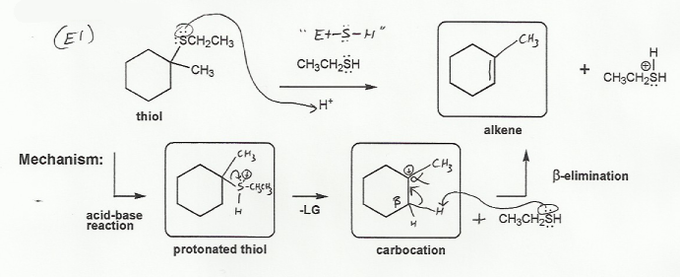The first step in this reaciton, like many reactions, is an acid-base reaction- when you see an H+ (acid), the first step is usually something getting protonated. This starting material is a thiol (sulfur), but the same thing would happen with an alcohol or ether (oxygen).
When you have a protonated thiol (or alcohol, ether, etc.), you know the reaction isn't finished yet- products are rarely charged. There are two legal moves to get that positive charge off of the protonated thiol. Either the thiol deprotonates, or it takes off as a neutral leaving group. It can't deprontate because that would be going backwards, so your only "legal move" is for the HSCH2CH3 to act as a leaving group (See problem 518).
But then you're left with a carbocation, which is definitely not the final product. How can we get rid of it? (See problem 335 for general ways carbocations react). If the HSCH2CH3 attacked in an SN1 type reaction that would be OK, but it would be going backwards! So the only way to get rid of the carbocation is to do a beta-elminiation (E1).
